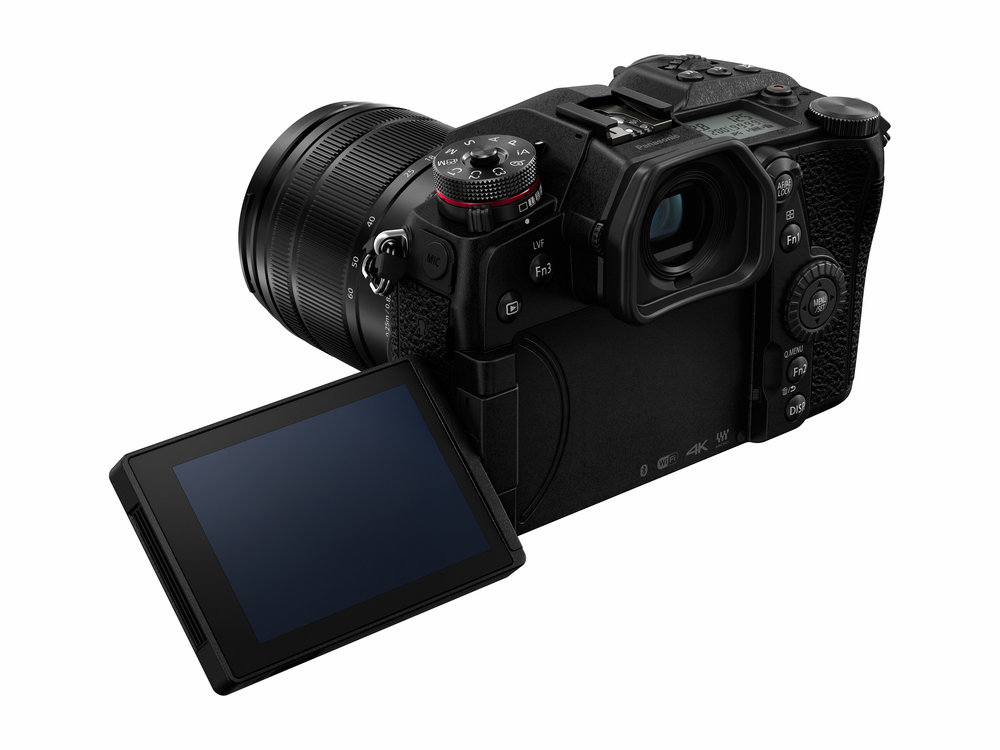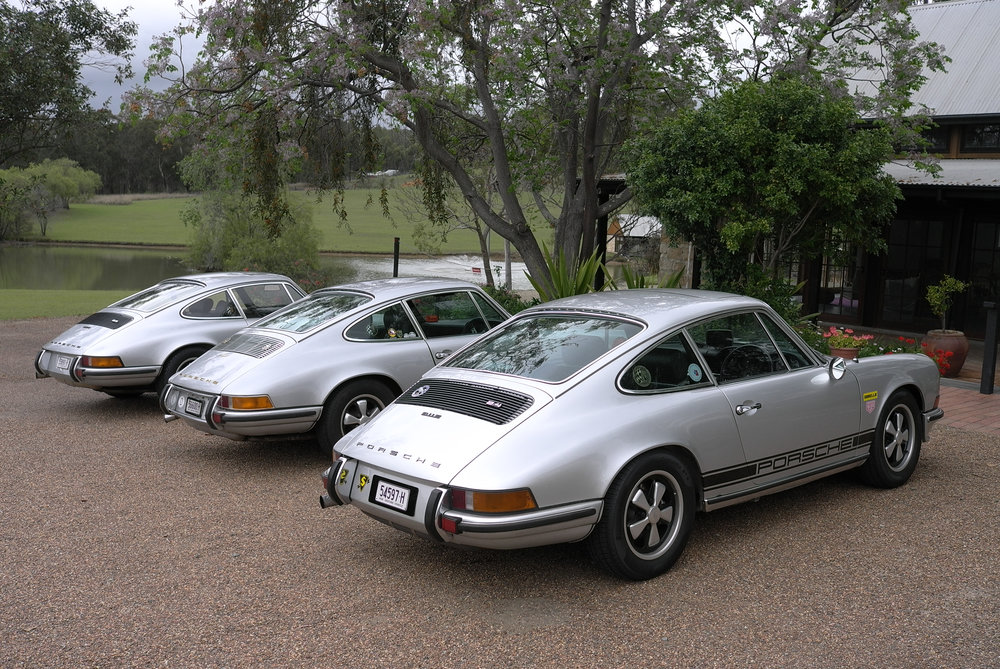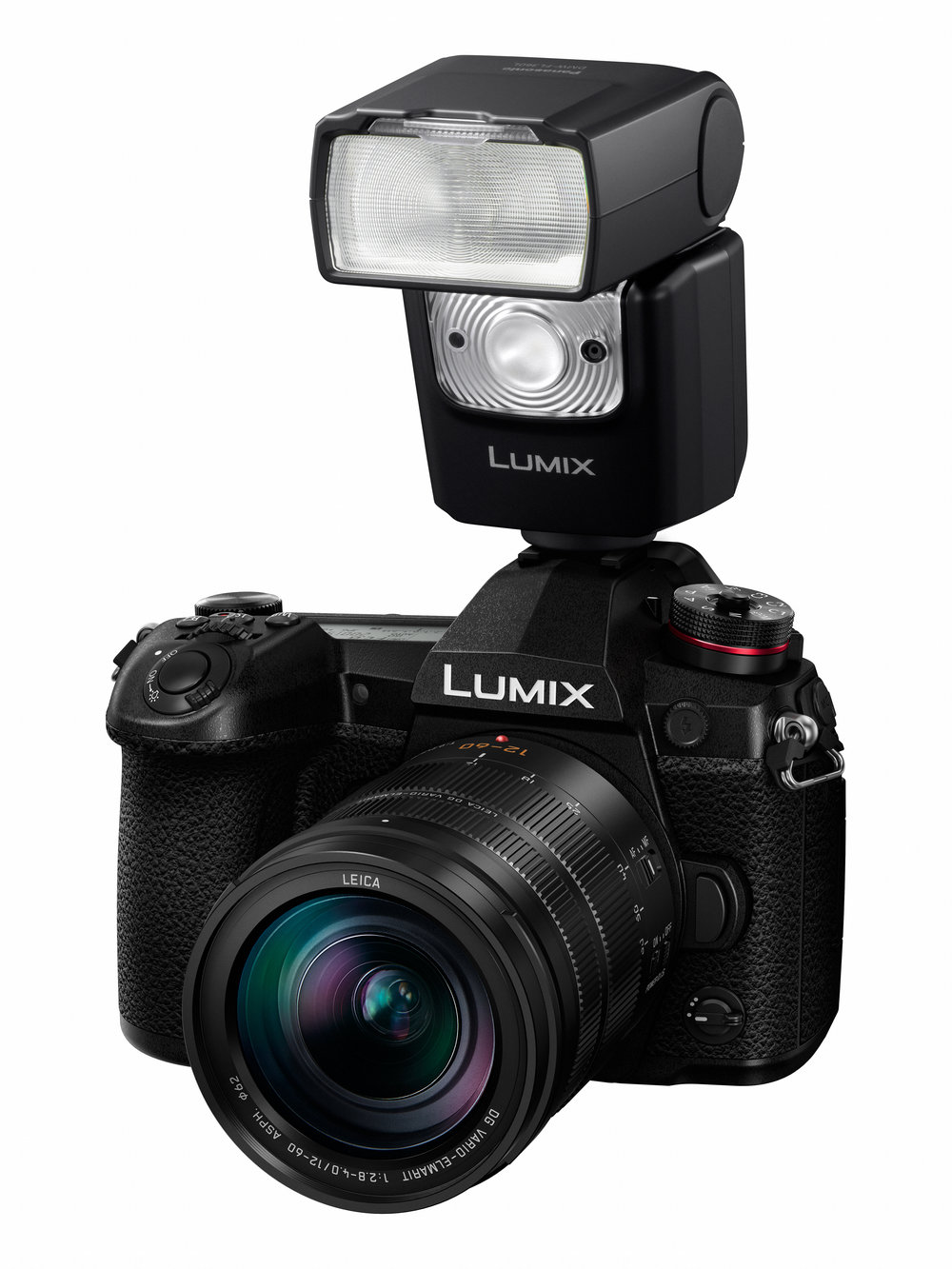
I was amused to see on The Online Photographer blog that Michael Johnston says, somewhat tongue-in-cheek, that the Panasonic Lumix G9 is the Porsche 911 of cameras. At first glance, it is a compliment. You know, build quality, unimpeachable brand image, desirability and all that. But it can be taken another way — that the G9 suffers from the same bloat as does the Porsche 911. The latest iteration of the famous series is ample (if I may be permitted the adjective) proof of Michael Johnson’s assertion. As well as the styling, in particular at the rear end, the weight coupled with all those driver aids, the designers of the latest 911 have totally destroyed the 911 driving experience.


Rumpelbloatskin: In half a century the Porsche 911 has gained an unwieldy fat rump, a 50% increase in weight and less exciting handling. Progress?
The last current-era 911 I drove, two models back, was totally uninvolving. I’d take either of my classic 911s any day over a current 911. Although, hopefully, the current 911 would start every time while, mine gave me palpitations by being reluctant to start at Hardys Bay, about 12km from home, one morning last week. Fortunately, it did eventually fire.
Still back to the G9/911 comparison. Considering the G9 has a small m4/3 sensor it is well overweight. The Leica Q, a full frame camera with integral lens, weighs only 640g whereas the G9 body alone tips the scales at 658g. At the same time, higher performance lenses for the m4/3 system are also suffering from bloating, although in terms of image quality that may be no bad thing. The original micro-four-thirds systems gloried in their overwhelming benefit of economy of scale: Small cameras, small lenses, lightness. They were the perfect antidote to the clunky crop-frame starter DSLR kits of the time.

Sadly, this glorification of the compact form has gone the same way as the spirited handling of the earlier 911s. My 1971 911 weighs 1,020Kg unladen; the latest 911 is 50% heavier and not better for it. Like the latest Porsches, the G(o faster)9 Lumix is a much speedier and smoother beast than the earlier models but what the latest Porsches gain in terms of performance (and safety) they lose in comparison to my classic Porsches in terms of driving involvement and fun. And, of course, it isn’t just Porsche when it comes to cars. Look at the original Golf or the first Mini of the early 1960s — tiny vehicles that have now morphed into bloated offerings
Michael Johnson is right, on reflection:, In terms of styling and system bloat, the G9 is the modern 911 to a tee. They make a good couple of fat arses in contrast with their Ur-models.
What do you think? Is it a good thing to have m4/3-sensor cameras outgrowing their APS-C and, in some cases, full-frame counterparts?
_________
You can find more from John Shingleton at The Rolling Road and on Instagram at therollingroad.

The G9 probably is a bit bigger than is ideal for MFT, but it claws back some ground on excellent ergonomics and handling, plus it works well with the bigger, longer lenses. If you were trying to build a do-everything kit in MFT, then the G9 or Em1ii for sport/wildlife use with longer glass such as the 100-400 Panasonic Leica, and then a smaller body (I have a GX8 and PenF) with the smaller primes for general use probably covers near on anything you’ll ever tackle.
In a sense, whether that bigger size stacks up against other brands/camera’s is almost irrelevant. If it does what i want, and if the lenses are substantially smaller than a full frame kit of the same effective focal length, then the slightly bigger body doesnt bother me too much.
Oh, and the G9 in L.MonoD produces some beautiful files with the 42.5 Nocticron. I’m a bit hooked on the combo, actually, despite it being far from compact!
Pana G9 and Oly M1 are top tier professional models, just as pro lenses. I understand the commercial reasons that prompted Pana and Oly to produce thesr models, but I do nt buy them: my cameras are the pen mini and m10, and my lenses are the f: 1.8 rather than the f:1.2. As long as both lines are produced and the customer can choose, I an happy.
You are absolutely right here, Andrea. There is room for a range of camera and lens sizes to suit all tastes. Nikon, Canon and Panasonic (less so because they don’t have a DSLR) need to attract the professional user who is used to his bulky DSLRs and massive lenses. Having tried the Leica SL and a number of lenses, including the superb 24-90, I have nothing but praise for it as a workhorse. It is superb, and the viewfinder is almost up to DSLR standards — better, in my view. Yet the system is bulky, Pro if you like, and I find it too heavy for my age and type of use. There is no perfect camera for everyone and it is good that we have such a wide and widening choice of full-frame cameras.
I agree with the comment in the next post that professional (and any) photographers need substantial camera for bigger glass. I downsized from the Leica SL system to a Panasonic G9 system and love the body size for the larger glass such as Olympus 40 – 150 f/2.8 and the incredible amazing beautifully rendering Panasonic Leica 200mm 2.8. I would not be able to carry the equivalent full frame glass. If the body size was a lot smaller, people would be saying it was too small with this glass. So I am happy it has a fat arse. What I wish, is they would have a model that drops video which I do not use.
There are smaller cameras such as the Olympus pen which needs an update to an EVF and so on and then I will buy to use with the compact glass options. I found the Sony A7R too small and uncomfortable to use with the GM zooms and had to buy the handgrip to make it comfortable. People keep forgetting that the size of glass is the biggest issue with a system of any breadth and the M43 system is a delight to carry for most real world situations. I love my Hasselblad X1D but for most situations my M43 system and Leica Q-P exceed my real world high expectations capable of prints up to 17”x22”. Unfortunately, nobody wants to pay me for bigger prints.
It seems like people want to criticize a camera for what it does not do ( a Porsche 911 never was a practical family station wagon or soccer mom van) but that it is amazing for what it does do. I love my G9 considering it is over complicated with features but it can be set up to be far more intuitive than Sony – thank God, but still not as natural as the overweight Leica SL (get rid of video and heat sinking, as nobody is going to use it for video).
The Panasonic G9 does not have a big arse for bigger glass. I just want a smaller camera with a similar evf suitable for manual focus. If I did not have the Leica Q-P, I would be looking for a smaller M43 camera option. The Leica Q-P has an almost perfect everything and certainly the size and weight is perfect. I will not be selling this camera for new version as I do not need more pixels or “better” pixels.
In summary, the G9 is a great camera, but if you do not mind carrying a kit of full frame glass then by all means go full frame. Personally, especially since car accident, the joy of light amazing glass (try the oly 75 1.8) is getting me out on extended photography adventures. I do not care about bogus armchair pontificating. I want to enjoy my creative outlet and care about the rendering of my images which is what is important for enthusiasts. Certainly Leica gets this but I wish they had done a m-mount compatible Q instead giant SL – they would have my bank account but I am probably a rare bird that cares more about emotion and rendering than superficial pixel peeping of flat target images.
It’s been all downhill since the Leica III…
Carwise, the Tacoma/HiLux has become angry and obese, too. I just want one of the old, small pickups/utes.
Please correct the spelling of the last name of the proprietor of the On Line Photographer blog: it is Johnston.
Thanks, Gordon, Will do.
I agree completely. I chose to go m4/3 entirely because I wanted a small and light system. Olympus seem to be even more out of touch with basis of their competitive advantage, the forthcoming E-M1X looks huge. This isn’t the way to beat the full frame competition.